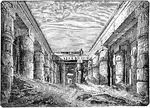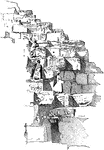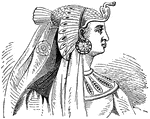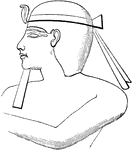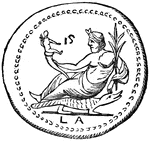
Pyramids of Gizeh
Two pyramids and a sphinx near Gizeh, Egypt, built during the 25th century. These three structures rank…

Sarcophagus of Menkera
"The third pyramid on the ridge of Gizeh was built by Menkera, a successor of Khafra and fourth or fifth…
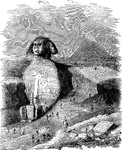
The Great Sphinx at Giza
A statue built on the Giza Plateau in Giza, Egypt, consisting of a lion with a human head. The Sphinx…

Obelisk of Heliopolis
A 68-foot stone pillar located at Al-Matariyyah part of Heliopolis. It is considered to be the earlier…
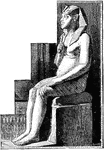
Statue of Amenophis IV
Also known as Akhenaten. Ruled as pharaoh of the Eighteenth Egyptian dynasty for 17 years.
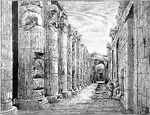
The Temple of Abydos
Built by Seti I and completed by his son Ramses II. The pillars in this temple contain carvings of very…

Ramses the Great
Also known as Ramses II. A profile portrait of Ramses the Great with carvings behind his head. He is…
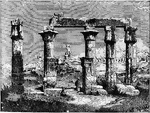
Ruins of Thebes
The city of Thebes was a major city during the 18th Dynasty of Egypt. Portrays the wreckage of the city,…
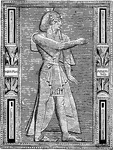
Menepta
Also known as Merneptah. He ruled Egypt as pharaoh for ten years, and was the thirteenth son of Ramessess…
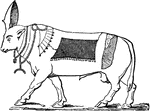
The Bull Apis
Also known as Hapis. In mythology, Apis was a commonly worshipped bull-deity in the Memphis region.
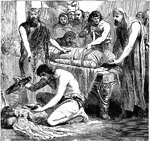
Process of Embalming
"When an Egyptian died the friends of the deceased went at once to the embalmer, By him they were shown…
Column from the Temple of Denderah, with Hathor Masks, Time of Cesar
Column located in the Temple of Denderah, with masks of Hathor, an Egyptian sky goddess of love and…

Confluence of the Tigris and Euphrates
"In their upper course the Euphrates and the Tigris traverse a region of steppes broken by rocky ridges…
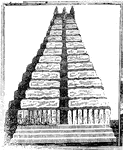
Ancient Pyramid
"The pyramids of Egypt are well entitled to a place among the most interesting curiosities in the world.…
Early Egyptian Pictures
"Early Egyptian Pictures. Ploughing, breaking clods, and sowing."—Gordy, 1912

A Prehistoric Egyptian Tomb
"The skeleton lay on the left side with knees drawn up and hands raised to the head. About it were various…

Khufu
A Pharaoh of Ancient Egypt. He reigned from 2589 to 2566 BC, and is known for being the builder of the…

Merneptah
The fourth ruler of the Nineteenth Dynasty of Ancient Egypt, reigning from 1213 to 1203 BC.

The Great Pyramid of Giza
"The pyramid when completed had a height of 481 feet. It is now 451 feet high. Its base covers 13 acres.…

The Great Sphinx
"This colossal figure, human-headed and lion-bodied, is hewn from the natural rock. The body is about…
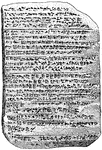
The Amarna Tablet
A series of correspondence on clay tablets between the Egyptian administration and its representatives…

Ramses II Seated
"A black granite statue of the youthful Ramses II. It is probably a faithful portrait. No better work…
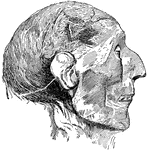
Head of Mummy of Ramses II
"The mummy was discovered in 1881, in an underground chamber near the site of Thebes. With it were the…

Central Avenue, Hall of Columns, Karnak
"The hall measures 170 feet deep by 329 feet broad. Its roof was supported by a central avenue of 12…
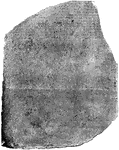
The Rosetta Stone, Front View
A fragment of an Ancient Egyptian text, which provided the key to the modern understanding of Egyptian…
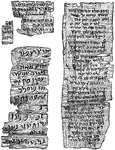
Ancient Hebrew Manuscript
"A papyrus of the first century A.D., containing the Ten Commandments. It was discovered in Egypt."—Webster,…

Rock Temple at Abu-Simbel
"The temple, built by Ramses II on the steep face of a cliff overlooking the Nile, has a facade containing…
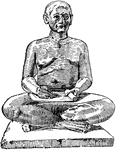
An Egyptian Scribe
A statue of a man who recorded books and/or documents during the era of Ancient Egypt.

The Sheikh-El-Beled
"Supposed portrait of one of the overseers of the work on the Great Pyramid. This is one of the masterpieces…

The Judgment of the Dead
"Showing the weighing of the heart of the deceased in the scales of truth."—Myers, 1904

White Lotus
White lotus is the common name of nymphaea lotus. The flowers are white with pink spreading towards…

Egyptian Brick-Making
An image of the Egyptian brick-making process. Bricks were usually made by foreigners. Exodus 5 records…

Papyrus
Papyrus reed that grows along the shores of the Nile. The stalks are pliable and capable of being interwoven…

The Lentil Plant
This illustration shows a lentil plant. Lentils are the round, flat seeds of a small leguminous plant…

Nose ring
Israeli women would often wear rings not just on their wrists, but on their noses and ears and ankles.
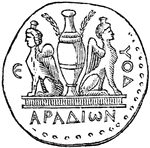
Two Sphinxes
A medal of Aradus depicting Two Sphinxes, which suggests an alliance between Aradus and Egypt.
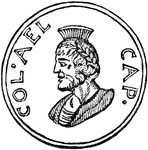
Serapis
The portrait of Serapis, a deity in Egypt, who was also thought to be brought to Jerusalem and worshiped…

Egyptian Agriculture
An example of Egyptian agriculture. 1, the reapers; 2, reaper drinking from cup; 3, 4, Gleaners - the…

Karnak
Karnak, Egypt, which comprises of a vast mix of decayed chapels, temples, and other buildings. It was…



